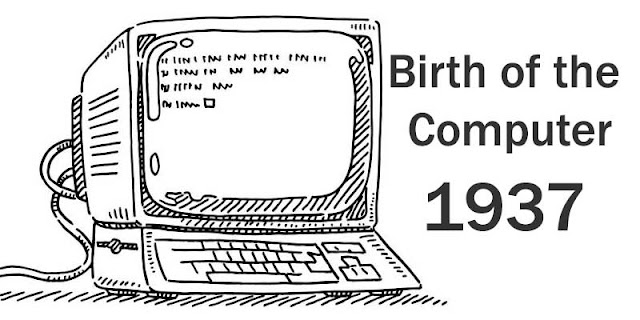A Complete Computers History - Explained
Would you be able to imagine your existence without a PC?
Think about/believe everything you wouldn't have the option to do. Send an email, online shop, discover a response to a question (or investigation) immediately.
What's more, that is only a hint of something larger. We've gone forward significantly from the complete and total first PC, and surprisingly the first cell phone. Be that as it may, what amount do you truly think about their set of experiences and development? From floppy plates to cloud security, the Oak-tree nut to the Macintosh, we should (ask lots of questions about/try to find the truth about) how far we've come.
The PC as far as we might be concerned today had its start with a nineteenth-century English science teacher named Charles Babbage.
He planned the (related to careful studying or deep thinking) Engine and it was this plan that the extremely important system of the PCs of today depend on.
As a rule, PCs can be showed/described into three generations. Every generation went on for a particular time of
time and each gave us either a better than ever PC or an improvement to the current PC.
Let's take a look at Complete Computers History
Birth of the Computer
1937 - 1946 - In 1937 the first (or most important) electronic computerized PC was worked by Dr. John V. Atanasoff and Clifford Berry. It was known as the Atanasoff-Berry Computer (ABC). In 1943 an electronic PC name the Huge thing was worked for the military.
Different improvements went ahead/moved forward until 1946 the principal (existing (the same) everywhere) useful advanced PC, the Electronic Number-based Integrator and Computer (ENIAC) were grouped together. It is said that this PC gauged 30 tons, and had 18,000 vacuum tubes which were used for handling.
At the point when this PC was turned on interestingly lights faintly in areas of Philadelphia. PCs of this generation could just play out a single/alone errand, and they had no working (solid basic structure on which bigger things can be built).
Computer Generation Second
1947 - 1962 - This generation of PCs used (elements used to make electronic circuits) rather than vacuum tubes which were more solid. In 1951 the first (or most important) PC for business use knew about people in general; the Universal Automatic Computer (UNIVAC 1).
In 1953 the International Business Machine (IBM) 650 and 700 arrangement PCs positively influenced the PC world. During this generation of PCs, more than 100 PC programming (different versions of a language) were created, PCs had memory and working (solid basic structures on which bigger things can be built). Ability (to hold or do something) media, for example, tape and circle were being used also/and were printers for yield.
Computer Generation third
1963 - present - The development of the incorporated circuits presented to us the third generation of PCs. With this development PCs decreased, all the more amazing and interesting more dependable and they can run a wide range of projects (at the same time). In1980 Microsoft Disk Operating System (MS-Dos) was understood/created and in 1981 IBM presented the (PC) for home and office use.
After three years Apple gave us the Macintosh PC with its symbol-driven (connecting point/way of interacting with something) and the 90s gave us Windows working (solid basic structure on which bigger things can be built).
Because of the different improvements to the improvement of the PC, we have seen the PC being used completely everyday issues. It is a valuable (tool or object used to do work or measure something) that will keep on meeting new improvements over the (long time/long distance).
Because of the different improvements to the improvement of the PC, we have seen the PC being used completely everyday issues. It is a valuable (tool or object used to do work or measure something) that will keep on meeting new improvements over the (long time/long distance).
Modern Computers 2021
Different kinds of current PCs incorporate cell phones, game consoles, tablet PCs, and even smart TVs are also a form of a computer. One trademark that the sum total of what PCs have is the ability to share data and records on an organization or worker.
Today, we bring across more figuring power on our cell phones than was (easy to get to, use, or understand) in these early models. The going along with a brief history of registering is a course of events of how PCs developed from their simple beginnings to the machines of today that surf the Internet, mess around, and move (from one place to another) interactive media as well as doing the math.





This comment has been removed by a blog administrator.
ReplyDelete